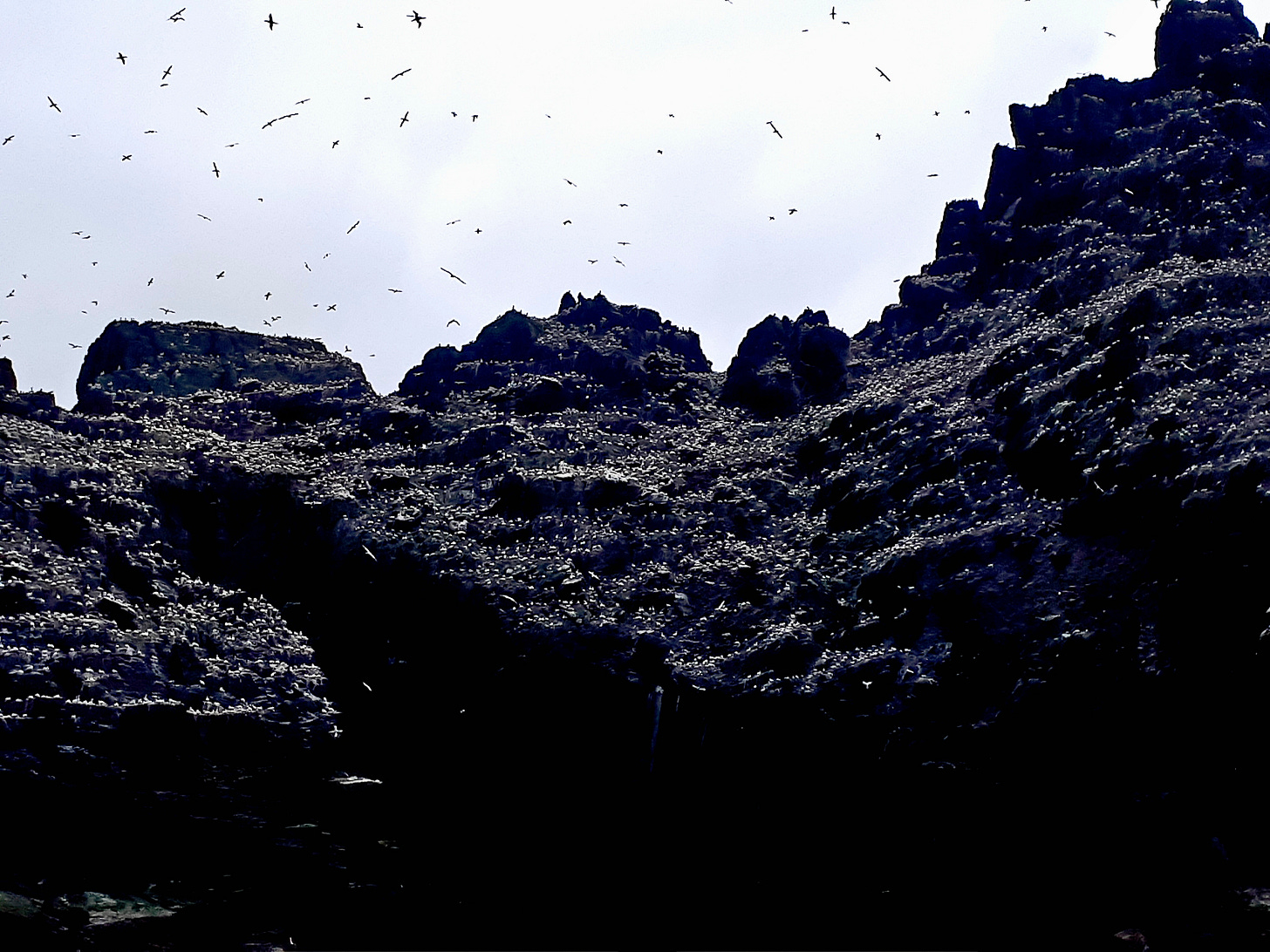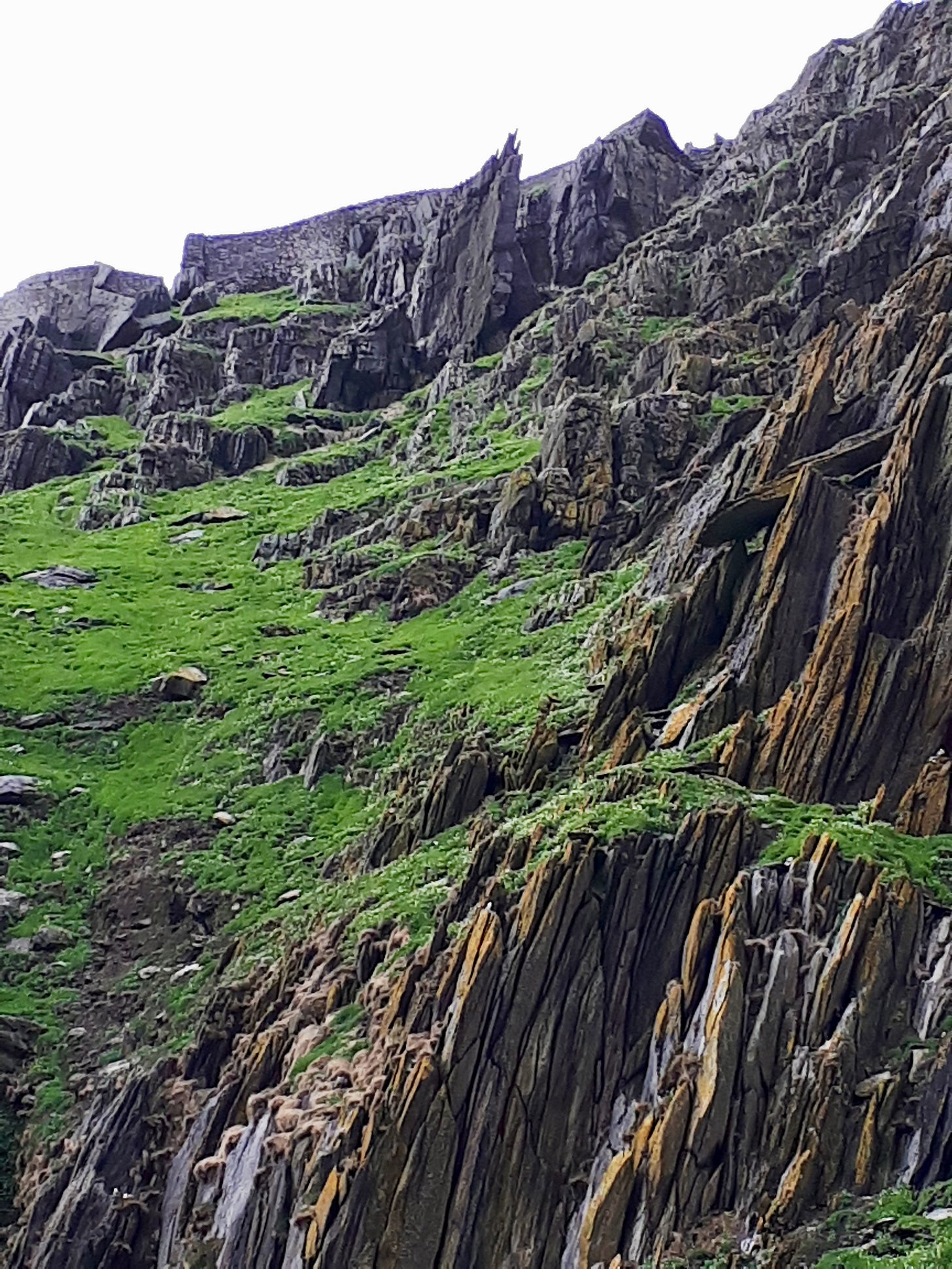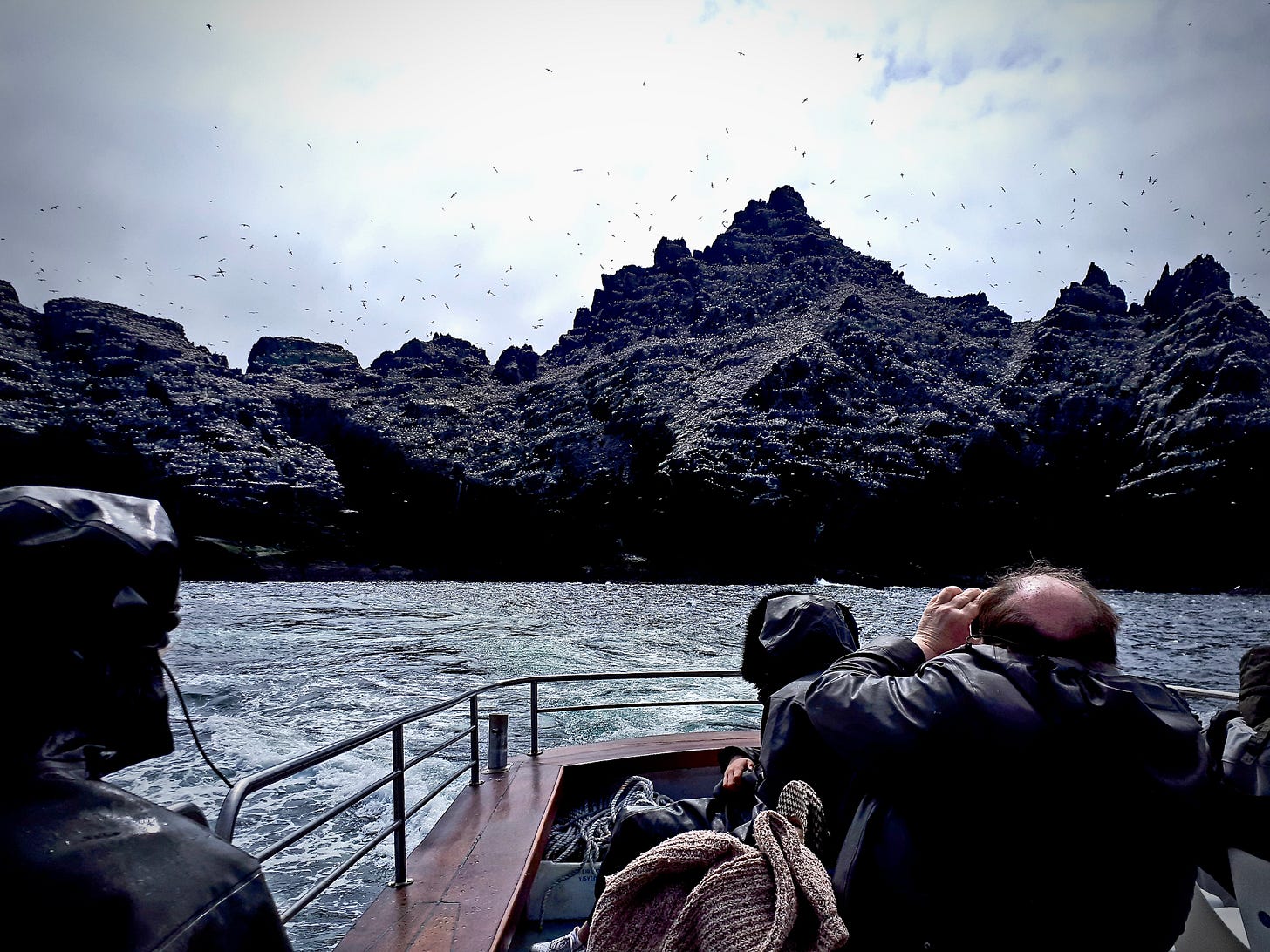Skellig Michael, Columba, Cuthbert: three documentaries and one short drama
Gratis post
My memories of the visit to Ireland in May 2022, along with David, my brother, and his son, Patrick, are pleasant ones. Among the many excursions we took during that journey was a boat trip over choppy, windswept waves to the wild and rugged Skellig Michael, the island where the boldest of bold Irish monks lived their ascetic lives and battled the devil “at the edge of the world.” (I suppose it’s expected that I mention the dreary fact that the site was used in two forgettable Star Wars movies. Well, now I have.)
Here are a few photographs I took during that notable visit:
That hunched fellow in the foreground — the one with the Friar Tuck tonsure (this is by far his best angle) — is David, snapping a shot.
What follows below is a rather fine old documentary about Skellig Michael and its companion sites, which put me in mind of our visit there. I pass it on to you for viewing, assuming that you’re an admirer, as I am, of those rigorous Celtic holy men. The description of it on YouTube is as follows: “This historical documentary traces the story of early Christian monks who lived, worked, and worshipped on the magnificent Skellig Islands off the coast of Kerry. Presented by Paddy Bushe and featuring the music of Noirín Ní Riain and the monks of Glenstal Abbey.”
***********************
The second video is a 2021 BBC production mostly in the Gaelic language, with English subtitles. It tells the life and legends of St. Columba or Calum Cille (521 - 597), the redoubtable Irish saint who founded the abbey of Iona and spread the gospel throughout Scotland. This is the film’s introductory description on YouTube:
BBC Gaelic language documentary with on-screen English subtitles. He was at the centre of a bloody battle and founded a monastery that became a beacon of civilisation in the Early Middle Ages. He is even said to have taken on the Loch Ness monster. But who was Colmcille, the Irish abbot also known as St Columba? Born in AD 521, his exploits as poet, scribe, politician, warrior and holy man became notorious throughout Ireland and Scotland.
This revealing new documentary, broadcast on the 1500th anniversary of his birth, explores the man, the myth and his legacy today.
************************
Finally, here are two short videos — both between 11 and 12 minutes in length — about St. Cuthbert of Lindisfarne (c. 634 - 687). The first is from Trisagion Films and is a straight-up documentary.
This is the description of it from the YouTube channel:
Saint Cuthbert was born in Britain about the year 635, and became a monk in his youth at the monastery of Melrose by the River Tweed. After many years of struggle as a true priest of Christ, in the service both of his own brethren and of the neglected Christians of isolated country villages, he became a solitary on Farne Island in 676. After some years as a hermit, he was constrained to leave his quiet to become Bishop of Lindisfarne, in which office he served for almost two years. He returned to his hermitage two months before he reposed in peace in 687. Because of the miracles he wrought both during his life and at his tomb after his death, he is called the "Wonderworker of Britain."
Cuthbert (c. 634 – 20 March 687) is a saint of the early Northumbrian church in the Celtic tradition. He was a monk, bishop and hermit, associated with the monasteries of Melrose and Lindisfarne in what might loosely be termed the Kingdom of Northumbria, in North East England[ and the South East of Scotland. After his death he became one of the most important medieval saints of Northern England, with a cult centred on his tomb at Durham Cathedral. Cuthbert is regarded as the patron saint of Northern England.
The second film is a bit daring: a dramatic telling of Cuthbert’s struggle against the Tempter during his days as a hermit, before he was “drafted” into the bishopric. I found the cinematography beautiful in places, the script at times wry, and the overall ascetic message simultaneously simple and thought-provoking.
The description:
'Cuthbert' speaks out of the mists of a distant age. As a monk and hermit living on the Island of Farne, Cuthbert is one of England's greatest Christian Saints. Living alone in simplicity, he pursues the Ineffable Light of God. But can he overcome the evil one who seeks to hold him back?
This epic new short film, shot over two days and edited over four months, has been inspired by Saint Cuthbert's mystical story. It aims to depict the orthodox Christian vision afresh, touching upon the battles we all still face today.





